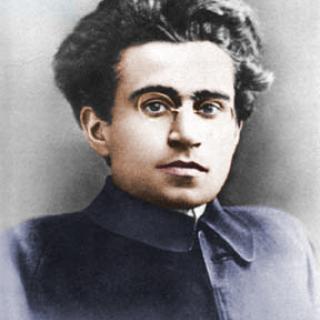I have been hoisted on my own petard. For decades now, I have assiduously ignored ninety-nine percent of all the rap music–an oxymoron if ever there was one–out there. And then came the publication of Notorious RBG. I immediately knew it was a tongue-in-cheek reference to the late rapper, Notorious B.I.G., but what I didn’t know was if he and Biggie Smalls were the same person. For those readers uninitiated in rap music, they were.
The book, which debuted last fall, grew out of a Tumblr blog produced by law student Shana Knizhnik, after the United States Supreme Court’s 5 to 4 decision in Shelby County v. Holder. The Court’s ruling eviscerated the Voting Rights Act of 1965 with its decision that Section 4 of the Act, which contains a formula by which states’ voting procedures need the review of the federal government before they can be changed, is unconstitutional. The Court went on to say that the narrowing of the racial gap so prevalent in voting before the passage of the Act, the explosion of black elected officials, especially in the south, and the election and re-election of an African American president are proof that the protections supplied by the Act are no longer needed. Outraged by the decision, Justice Ginsberg read her dissent from the bench, something that is highly unusual.
Within days she was deemed a liberal icon who saw the Constitution as a living, breathing entity that should reflect the times. Posters, Halloween costumes, t-shirts, coffee mugs, and other kinds of tchotchkes–some ridiculous, some sublime–featuring Justice Ginsburg sprang up like topsy. A special favorite? Items labeled “Can’t spell the truth without Ruth.”
While Dorothy Parker-witty, this slim volume is also a serious look at how Ginsburg’s work has changed American society for the better. As a lawyer, she argued six gender discrimination cases before the Supreme Court and won five of them. The cases, which struck down gender discrimination and developed crucial rights enjoyed by women and men, are annotated in plain English so that they are accessible to the casual reader. Early on she saw the importance of representing men who suffered because of discrimination against women. In one of the cases, her client was a man fighting the Social Security Administration for the survival benefits of his late wife, so badly needed in order to rear the newborn she left behind.
Ruth Bader did not have those rights. Born in Brooklyn during the Depression–her father was a furrier–Bader was subjected to the suffocating gender restrictions of that time. Still, she was an excellent student and graduated from high school the day after her mother died of cancer. (Ginsburg paid tribute to her mother when first nominated by President Bill Clinton.) She earned her undergraduate degree at Cornell University, where she met and married Martin Ginsburg, and graduated with honors in 1954. In 1955 they welcomed their daughter, Jane–their son was born in 1965–and in 1956 she and her husband entered Harvard Law School.
Those first years were tough sledding; her husband was diagnosed with testicular cancer, they had an infant, both were in law school, and the blatant gender discrimination of the era made their lives that much more difficult. There were only nine women law students at Harvard at that time, and even though she was a member of the law review Ginsburg could not use all the reading rooms. Graduating at the top of her class, she could not get a job, a commonality she shared with Sandra Day O’Connor. Finally one of her professors intervened, and she was hired to clerk for Edward Palmieri, a federal judge. Afterward she taught at Rutgers School of Law and was tenured in 1969. She transferred to Columbia Law School in 1972 and was its first tenured female professor. She co-authored the first case book on women’s rights law and co-founded the American Civil Liberties Union’s women’s rights project. Twice during her career she filed lawsuits against her employers!
The Ginsburgs’ marriage was an extraordinarily egalitarian union for its time. They swapped breadwinner and parenting roles based on what needed doing at the time, and who was the best person to do it. (Her husband also handled all of the cooking during an era in which it was seen as the domain of wives.) The angst many professional women of her generation suffered as they tried to balance a career with marriage and motherhood appeared not to have touched Ginsburg. Her marriage to Martin Ginsburg was a partnership in the truest sense of the word; he greatly admired her intellect, work ethic, and independence. In part he saw his role as enabling her to use her talents to the fullest. Ginsburg knew her husband loved her totally, and just days before his death, he wrote her a letter that was so romantic and tender, I was reduced to tears.
In Notorious RBG, we see how Ginsburg the lawyer and justice has always looked for the teachable moment. Prior to her elevation to the Supreme Court, she painstakingly created a body of decisions that made the American government see women and men as co-equals entitled to equal protection under the law. Her litigation strategy was incremental; to this day she firmly believes that social change begets legal change. It is this belief that marks her disagreement with Roe v Wade (1973). The sweeping manner in which the decision invalidated all state anti-abortion laws at once without feedback from citizens and legislators worried her. Early on Ginsberg feared a backlash that in the long term would result in even more opposition to reproductive rights. Her fear has proved prescient.
Moreover, Ginsburg has consistently eschewed symbolism over substance. For instance, despite urging from students and colleagues, she refused to demand that she be addressed as Ms. Ginsburg, feeling the discussion would detract from her work and prove nothing. Neither did Ginsburg dress for success by emulating the uniform of the old boys club. Resplendent in colorful dresses, smart suits with feminine details and beautiful jewelry, she allowed her work and passion to do all the talking.
Ruth Bader Ginsberg, all five feet, one hundred pounds of her, is an overlooked titan in the legal world, and an unsung heroine of gender equality. This charming paean to her life and career is well deserved.



